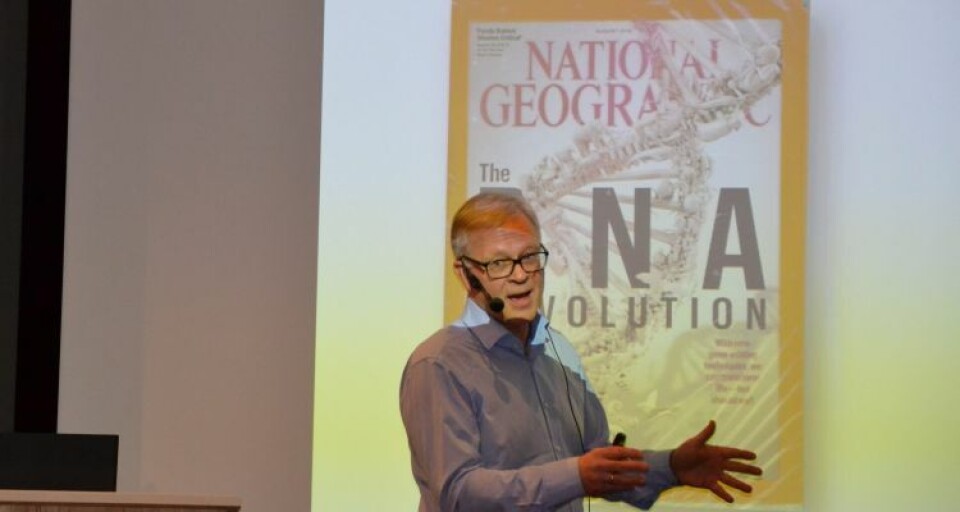
Genomics key to conquering lice
“Knowing the complete DNA code of the salmon could have far more impact on the future sustainable growth of the aquaculture industry than moving cages further offshore,” according to the Chairman of AquaGen, Odd Magne Rødseth.
Speaking at today’s Aqkva conference in Stord he also told delegates that a time when chemical delousing agents are not needed may not be so far away.
Knowledge about DNA has exploded over the past decade. In 2014, the entire genome of salmon was sequenced at cost of approximately NOK 100 million. But the long term effect of this will far, far exceed those expenses, if one is to believe Odd Magne Rødseth.
“The job now is to understand what all those codes mean,” he said.
To illustrate the power of DNA knowledge, he pointed to the discovery that a single base pair in difference can mean that a woman has either 60% or 2% chance of getting breast cancer.
“We also saw the same thing in salmon – single base pair in DNA is what separates those who are resistant to IPN and those who are not. By phasing in this in breeding we have, in a few years, more or less eradicated IPN,” he stated.
Rødseth also pointed to the example of the US chicken industry, which since 1970 has reduced FCRs from 2.5:1 to 1.5:1.
“A 100 million tonnes of chicken can be produced for 100 million tonnes less corn, which in turn frees up 90 million acres of farmland,” he said.
“Genetic modification has also meant that today we require far less land to produce the same amount of maize,” he pointed out.
Further opportunities
From conducting traditional section in 1970, the salmon industry has gone through marker-based selection, to genomic selection today. And still there are several steps on the ladder not yet adopted commercially, according to Rødseth.
“Traditional breeding can reduce infestations by 50% within 5-6 generations, if we focus exclusively on breeding. Genomic selection has been achieved a reduction of 30-40% within 1-2 generations. I think that, in a few years, we will be able to control lice with a combination of breeding, lice skirts and cleanerfish, completely phasing out the use of drugs,” he argued.
But he believes there are opportunities to make further breakthroughs.
“Consumers in Europe are currently sceptical of traditional genetic modification, where you move a gene from one species to another. But so-called gene editing, through which we go in and turn on and off genes that are already there, I think is easier for them to accept,” Rødseth continued.
The chairman points out that gene editing has already been used to produce sterile fish in trials at the Havforskningsinstituttel.
“But if we use the knowledge of why coho salmon are immune to lice and edit this into the gene for the Atlantic salmon we can produce salmon that are sterile and 100% louse resistant. Consumers will accept that within 5 to 10 years,” he stated.
“Therefore, I believe that the application of DNA acquired on this basis will have far more significance for sustainable growth than all the steel that is being placed offshore,” Rødseth concluded.























































